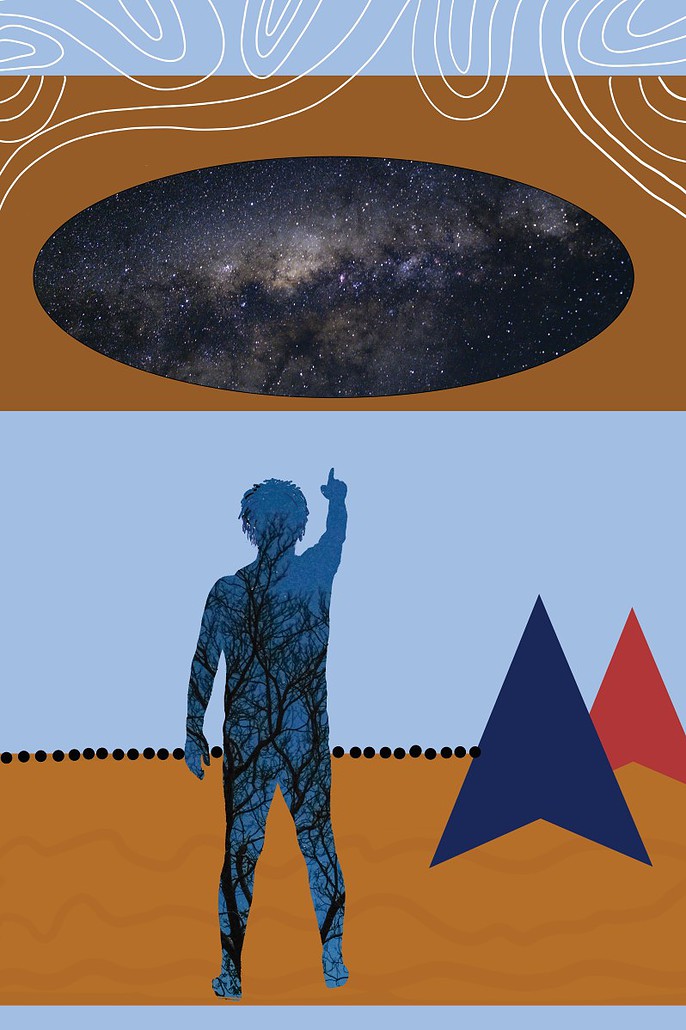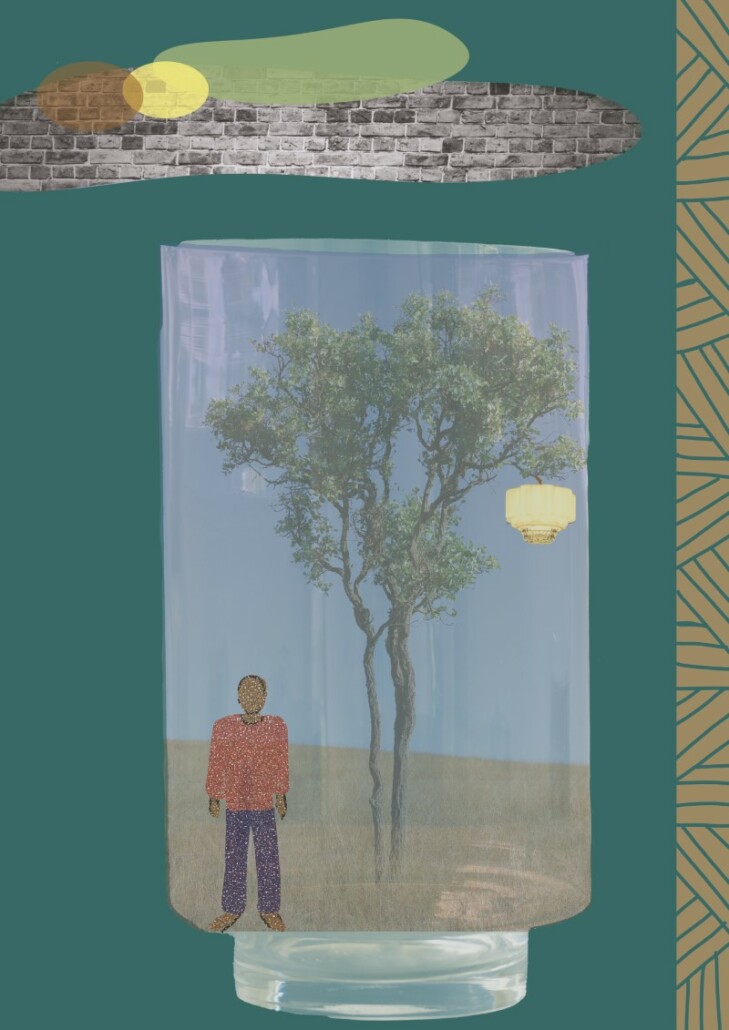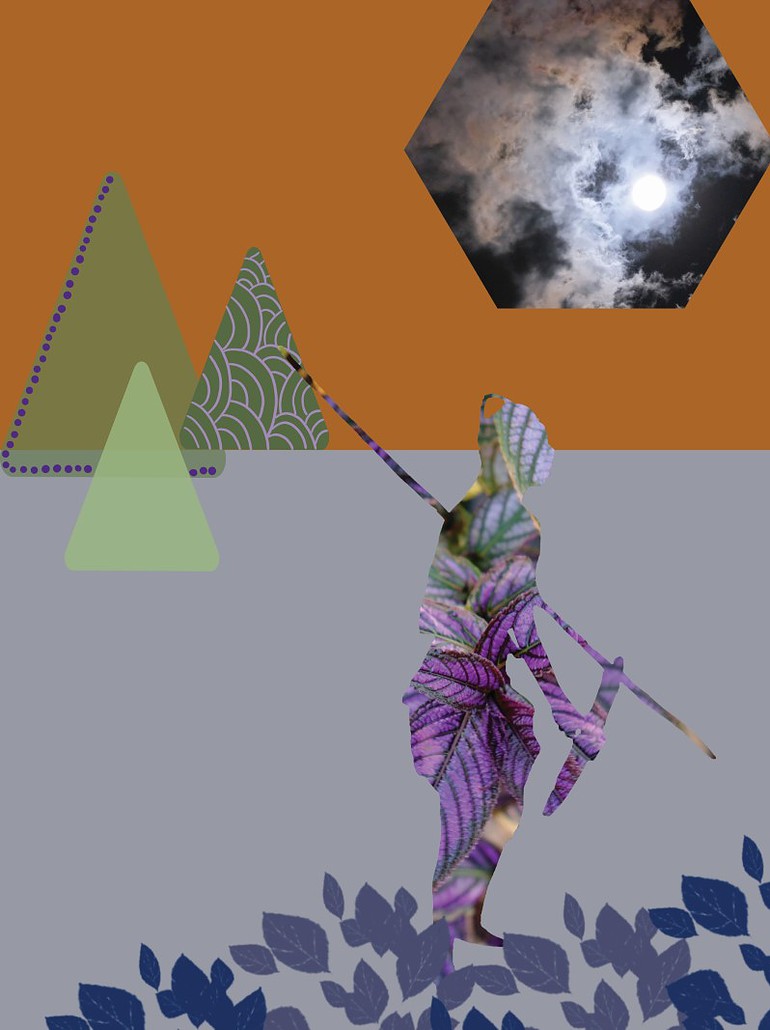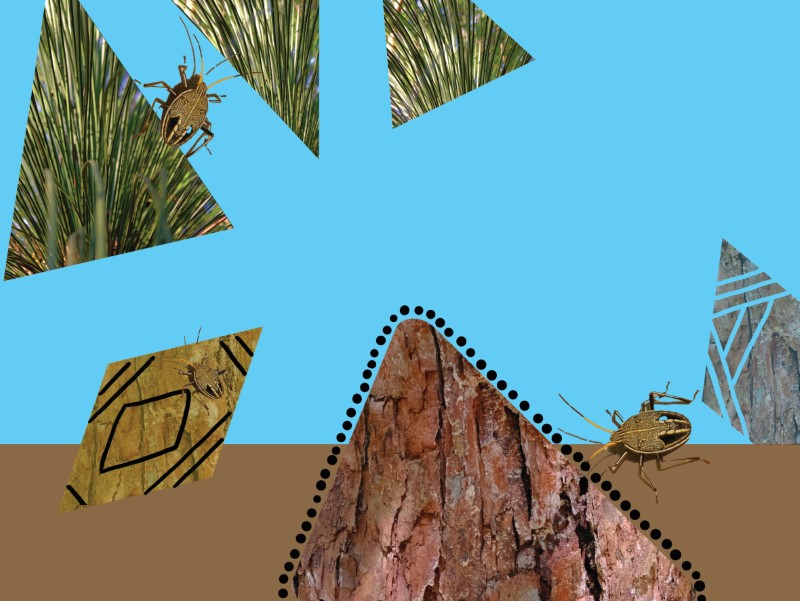“It’s never too late to learn anything new,” says Queensland-based artist Karen Klimm, who came to the medium of digital art later in life. Over the last three years, Klimm has been expanding her practice to encompass digital technology, providing her with new and innovative ways to express her Aboriginal heritage.
“As an Aboriginal woman who does art, it is about the story that goes with each finished artwork that is important,” says Klimm, whose unique edition works each explore an aspect of her experience. The artist prefers a minimalist style that emphasises pattern and form, contrasting fields of colour with fragments of photographs she captures herself. The juxtaposition of abstracted narrative elements and the inhabitants of her scenes provide the audience with a snapshot of the artist’s personal journey, with the pared back aesthetic allowing viewers to decipher their own stories.
The artist often uses silhouettes of human figures that gain substance from natural imagery, taking advantage of the flexibility of digital artmaking and reflecting a recent preoccupation with humanity’s place within the ecosystem. Klimm utilises photographs of local flora she has captured during her extended travels across the Australian landscape and, in doing so, consolidates mankind with the landscape it inhabits, the merging of worlds reflecting her own experiences.
Klimm has turned a corner in her artmaking practice, finding a fresh voice for her personal narratives through the clarity and versatility of the digital medium.
Above: Karen Klimm, Art Deco Beetles, 2022. Photography and digital print, 80 x 60cm. Courtesy: the artist.




